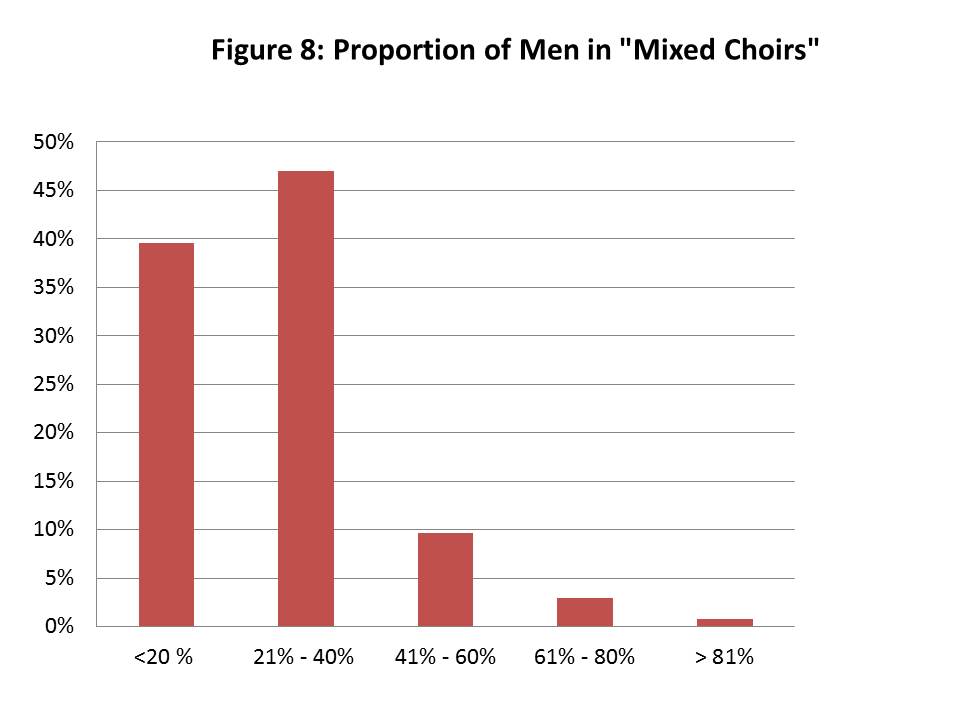
Community Choirs in Australia: Participation, Concerts and Rehearsals
Based on respondents, Australia’s community choirs have an average of 37 members, rehearse 43 times per year and perform an average of 11 concerts per year.
Age of Choirs
Most Australian community-based choirs have been running for less than 10 years. The highest proportion have been running for less than five years (39%), followed by five to ten years (19%), with fewer choirs as the number of years increases. (Figure 3)
One observation here is the comparison with community orchestras, which we have found to show the opposite trend (Figure 3). The majority of orchestras have been running for more than 20 years with a small percentage being created in the last five years, while choirs appear to be more recently established. There are at least two possible explanations for this: one is that there has been a new burst of activity in recent years, to the point where one in three choirs has been running for less than five years. Another possibility is that choirs naturally ‘come and go’ more frequently than other kinds of community music group (orchestras, for example), perhaps because that is the nature of the sector or because they are less established and not sustainable. We estimate that there are far more community choirs than orchestras (Appendix 1), it is possible that there are just as many long established choirs as there are orchestras but the high proportion of new choirs includes less established groups.
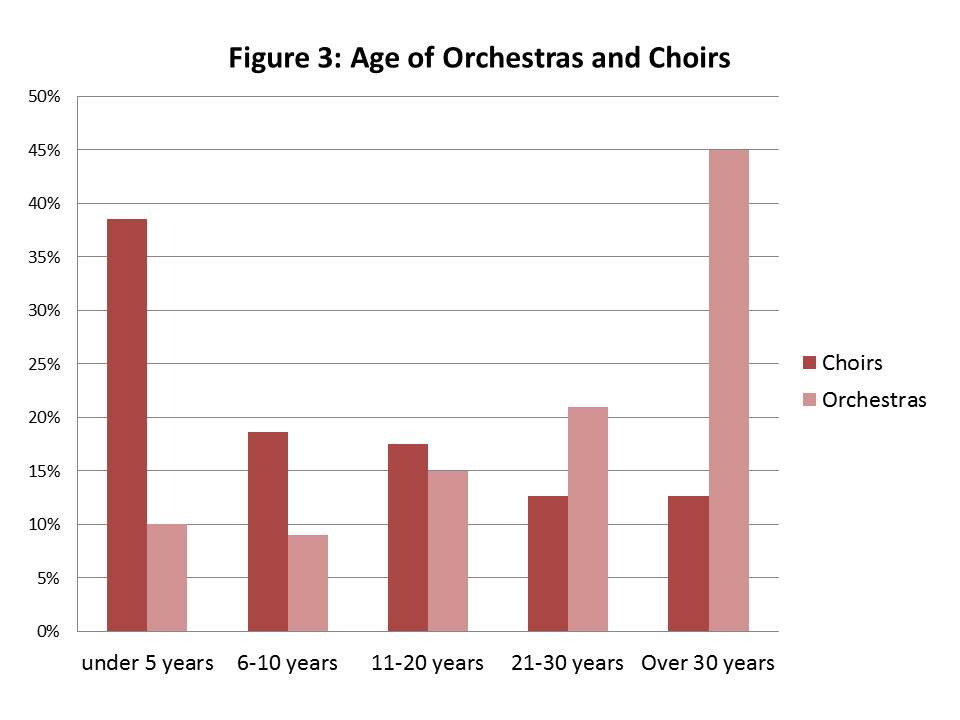
Another observation is that the age of a choir might be determined by the style of choir[i]. We have found that choirs identifying as “classical” are far more likely to have been running for over 20 years; in fact half of all respondents that have been running for over thirty years also identified as “classical”. Pop/contemporary choirs, on the other hand, are far more likely to have been established in the last five years.
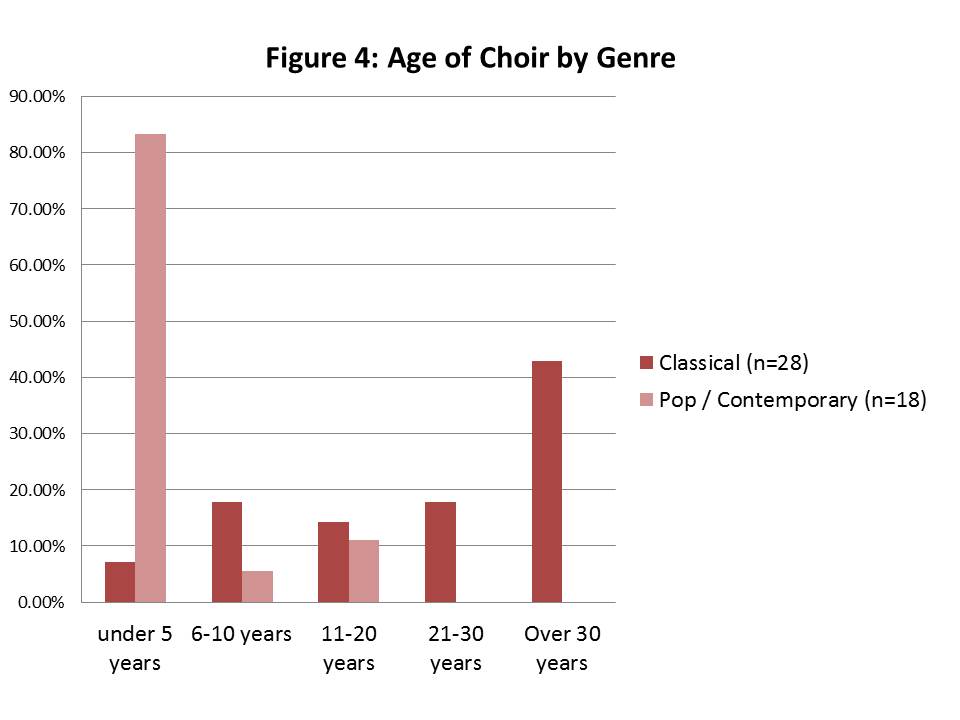 Age of Members
Age of Members
The most startling observation about the age groups included in choirs is the gradual increase in participation with each increasing age bracket. The highest proportion of participants are in the 55-64 age category (24%), with a gradual increase from the 18-24 age category (6%). 25-34 (9%), 35-44 (13%) and 45-54 (21%). In total, almost two thirds of choir members are over 45 (65%) with a very small proportion of people under 25 (Figure 5).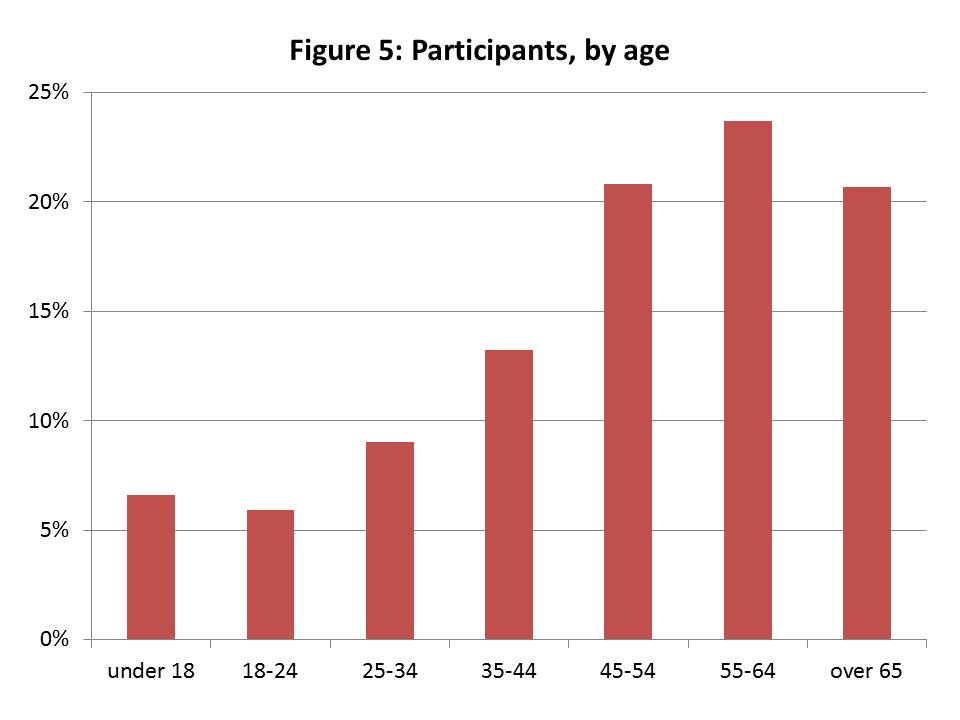
Our 2012 survey of community orchestras found that different age groups are represented more consistently, and in more orchestras, than the balance of age groups in community choirs. We treat this with some caution since the surveys were slightly different, but Figure 6 suggests a clear trend.[ii] While a consistently high number of orchestras include members from each age group, choirs are increasingly more likely to include people from age groups as they increase.
This suggests that relatively few people continue group singing after school, many more return to it or commence group singing later in life.
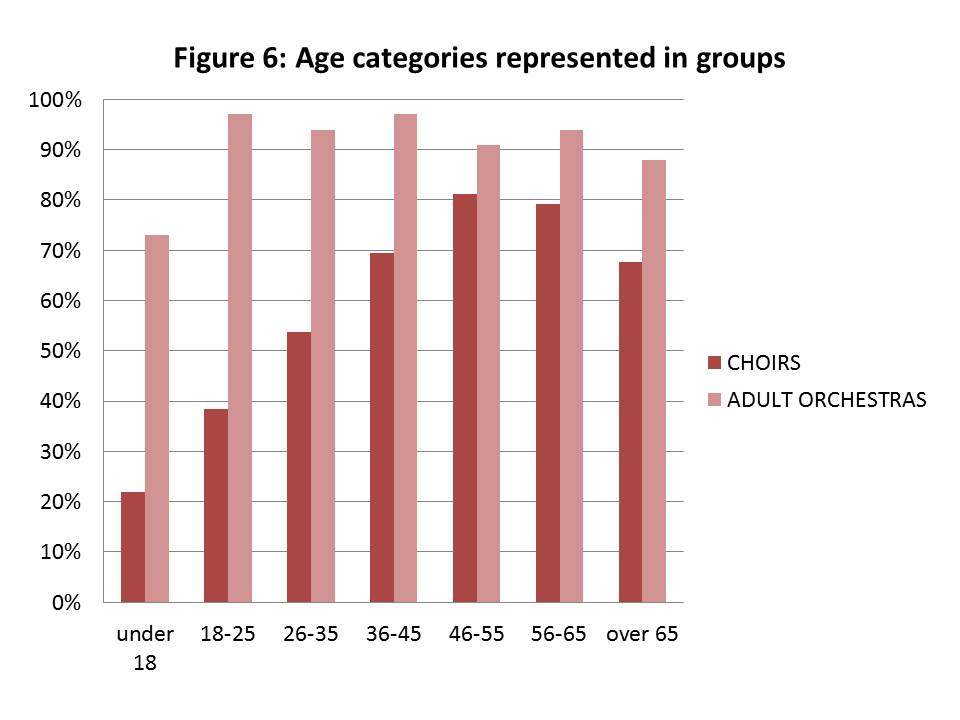
Gender
One issue that affects choirs in a different way to other music groups is gender balance. Unlike orchestras, brass bands, jazz bands, rock bands, ukulele groups, pipe bands and so on, the voice is the primary instrument and therefore the combination of voices is a matter of ensemble balance as well as the social makeup of the group.
There is a clear gap between the numbers of men and women in community choirs. We estimate that 30% of all singers in community choirs are men, 70% are women. Our research found 81% of choirs being ‘mixed’, 6% ‘male only’ and 13% ‘female only’.
As Figure 7 shows, the largest group of singers in community choirs are women in mixed choirs (60%) followed by men in mixed choirs (23%), then women and men in gender specific choirs (12% and 5% respectively).

The proportion of participation in mixed and gender specific choirs is approximately the same (about 81% of male singers and 80% of female singers are in ‘mixed’ choirs), although the number of women is much higher. It is also very rare for a ‘mixed ‘ choir to have a majority of men; Figure 8 shows that mixed choirs are most likely to have 20-40% male members, somewhat likely to have fewer than 20% male members, but only 4% have over 60% male members.
[i] This comparison should be treated with caution statistically since it has a smaller sample than other results in this study.
[ii] For the Community Orchestras in Australia survey we asked whether the group includes members from each age group; for the Community Choirs in Australia survey we asked how many members of the group fall into each age category. Therefore, in both surveys we asked whether any members fall into each age category but the questions are not identical and should be compared with caution.


